Eight Decades of Rubbermaid in Wooster
- Home
- Economic Development
- Exhibits
- Eight Decades of Rubbermaid in Wooster
By Shannon Dade, revised by Glenna Van Dyke
The company today known as Rubbermaid started out as Wooster Rubber Company in 1920. Over the course of their time in Wooster, they would change names and transform from a small balloon manufacturer to a nationally recognized household name.
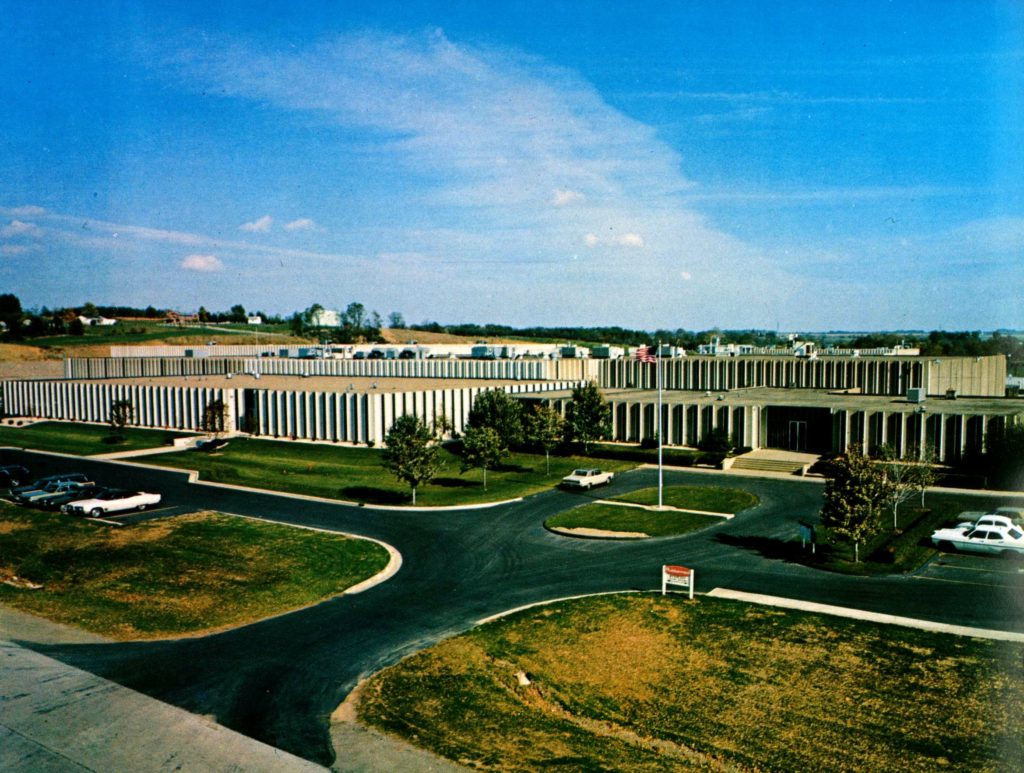
After World War II, Rubbermaid helped Wooster grow into a thriving small city, and put Wooster on the map, securing its role in the national and international marketplace. The relationship between Wooster and Rubbermaid benefited the city immensely but it also tied their economy to the ups and downs of the Rubbermaid company. Although Wooster is no longer home to Rubbermaid, the company’s legacy shaped the city immensely.
Rubbermaid is Born
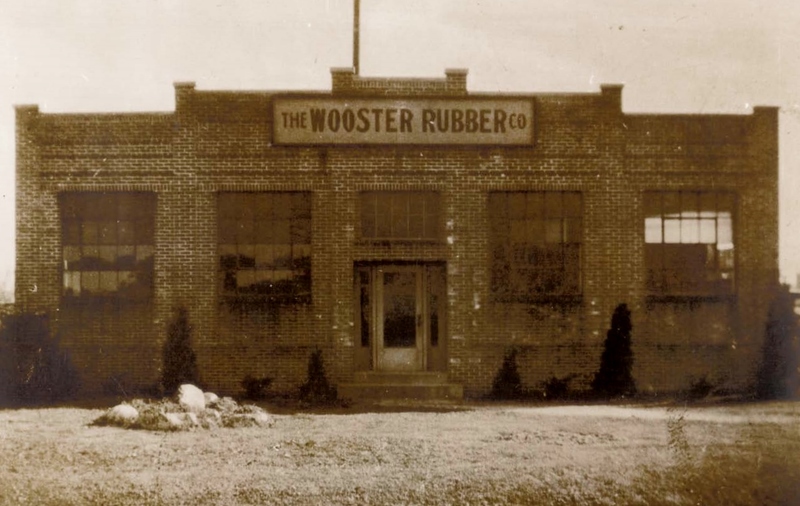
The Wooster Rubber Company was founded in 1920 by nine businessmen, including T.E. Rice, A.L. Robert, and Clyde Gault. The company started out making toy balloons. The company was then bought in 1926 by Ebert and Errett Grable, two executives of the Aluminum Cooking Utensil Company. The balloon-making factory was successful until the stock market crashed in 1929 and suddenly, they needed new ideas to prevent them from going bankrupt. The answer to their woes was unconventional and came in the form of James Caldwell and his rubber dustpan. 1
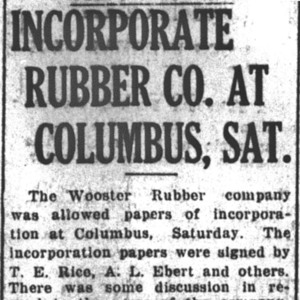
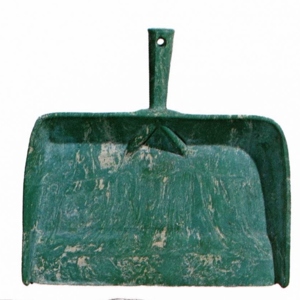
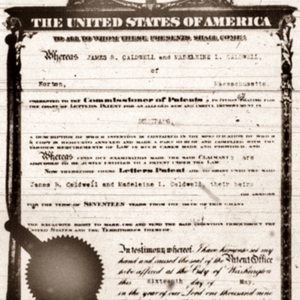
James Caldwell and his wife Madeleine began experimenting with making household products from colorful rubber in the 1920s, the first of these being a rubber dustpan. Caldwell began selling these door-to-door, but they became so popular that he sought out a plant that would make them en masse. 2 Caldwell and Ebert met to discuss a new partnership in 1934. Later that year Caldwell moved to Wooster and became president of the company, and instead of producing balloons, they made Caldwell’s new line of household products, which he named “Rubbermaid”. 3
Wartime Production
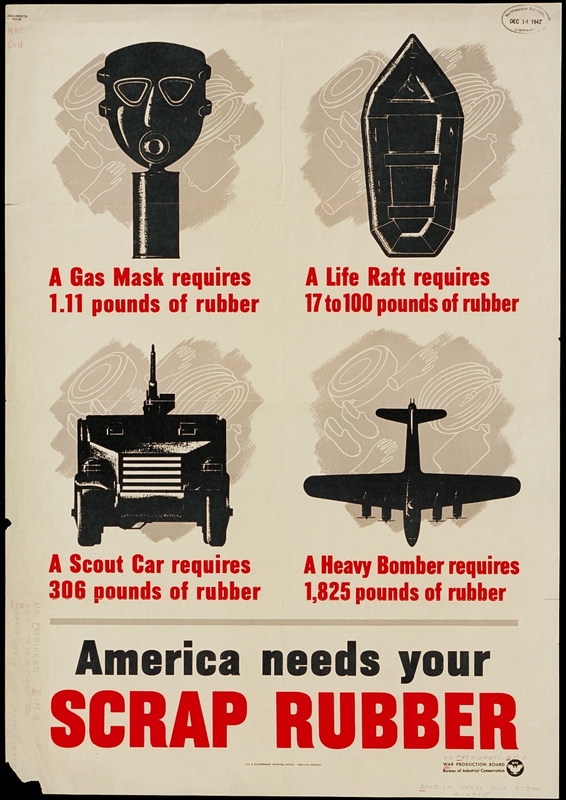
With Caldwell’s help, Wooster Rubber Company managed to survive the Great Depression, and even expanded their line to include rubber dish racks, gloves, sink. Mats, and dish scrubbers. Hard times would hit the company though in 1942, when the federal government halted the production of all non-military rubber goods. Wooster Rubber Company shut down production and was forced to lay off all but sixteen of its workers.
Before long though, Caldwell found a solution to this problem, and secured Wooster Rubber Company with a military production contract less than six months after they shut down. For the next three years, the factory was busier than ever producing rubber parts for planes. Not only did they rehire their old workers, but they recruited workers from the surrounding towns, and by 1944 Wooster Rubber Company had over 500 employees. Although wartime production eventually stopped, the wartime production boom propelled Rubbermaid towards postwar success.1
The Boom Years
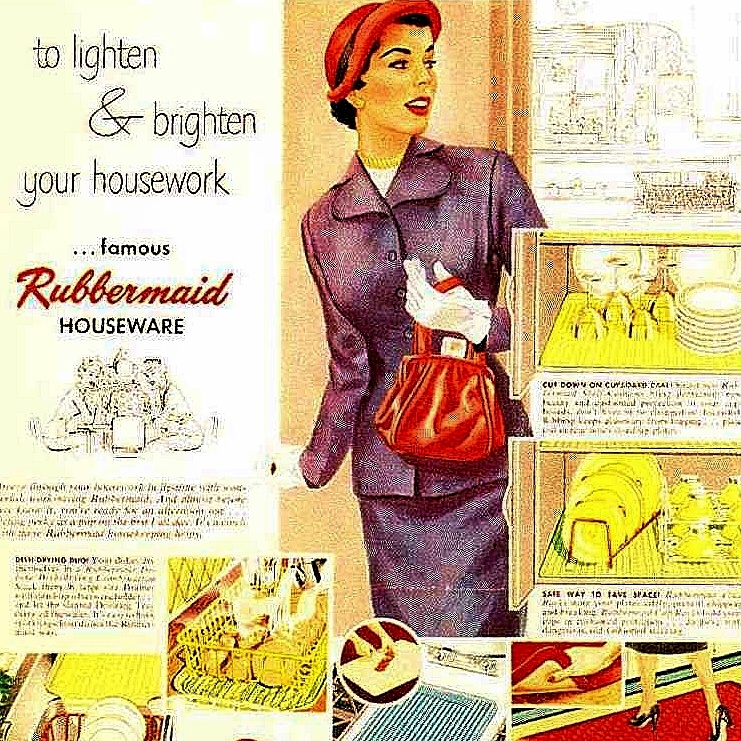
The end of WWII saw the rise of the post war economic boom, and with it, a new standard for women as suburban housewives. With limited access to the workforce, women were expected to take care of the home, which included buying the newest household products. Rubbermaid was happy to provide these products and advertised mainly to women in the 1950s and 60s. During Wooster Rubber Company’s first year after the war, they sold $2.5 million worth of household products, and by 1949 that figure had doubled. Rubbermaid stayed on the cutting edge of household technology and started selling molded plastic products in 1955. By 1957, the name ‘Rubbermaid’ had become so well known that Wooster Rubber Company adopted it as their own.
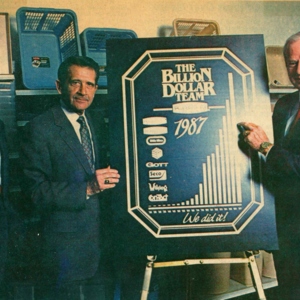
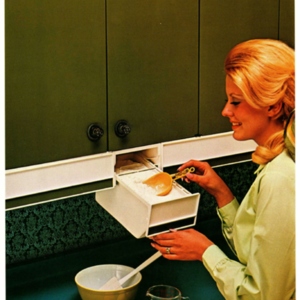
As Rubbermaid expanded, so did its influence in Wooster. Their local workforce grew from 731 in 1955 to over 1,000 in 1960. 2 The company expanded its original Bowman street plant, and in 1960 they began construction on a new massive headquarters on Akron Road. As Rubbermaid broke ground on its new premises, CEO Donald Noble declared, “This groundbreaking ceremony is symbolic of our faith in Wooster and the people of this community, and of our desire to continue to be a part of Wooster.”3 Donald Noble retired in 1981 and Stanley Gault, a former General Electric executive and Wooster native took it over. Under his leadership, Rubbermaid became a Fortune 500 company and an internationally recognized brand.
Rubbermaid Leaves Wooster
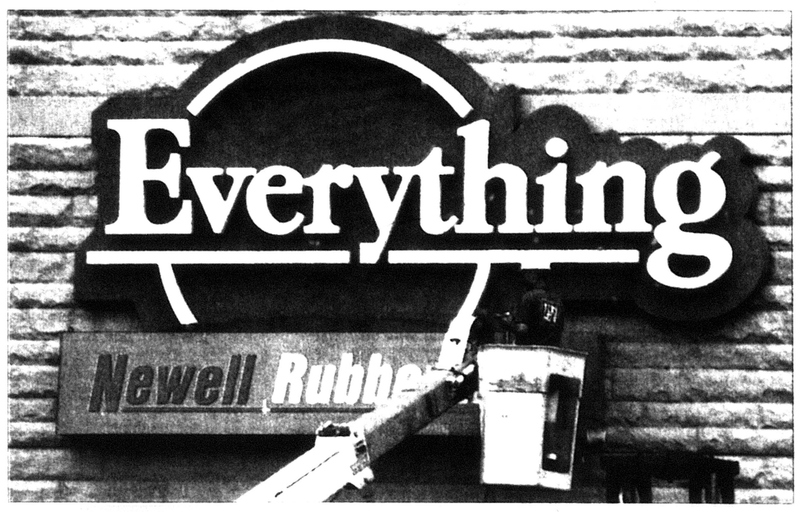
In 1994, Fortune magazine named Rubbermaid “America’s most admired corporation,” but Rubbermaid’s soaring success would not last forever. Within the next few years, profits began to decline as the price of materials rose and big box retailers pressured them to keep prices low. Newell, an Illinois-based housewares corporation, ended up buying Rubbermaid in 1998 and soon relocated its headquarters to Atlanta, Georgia.1 The loss of the town’s largest industry certainly came as a blow to Wooster, but Wooster has been able successfully craft its own image without the company that shaped its history.
Sources by Section
1 Donald E. Noble, Like Only Yesterday: The Memoirs of Donald E. Noble, (Wooster: The Wooster Book Company, 1996), 54-63. See also: “TE Rice Heads Concern Which Will Make Toy Balloons Here,” the Daily Record, Mar. 12, 1977.
2 Noble, 61-62.
3 Noble, 62.
1 Noble, 71-79.
1 Noble, 81.
2 “Rubbermaid Built from Dustpan to $32 Million Annual Business,” The Daily Record, April 28, 1964. See also: “Rubbermaid,” Wayne County Businesses L-R, Binder, WCPL Genealogy and Local History Department.
3 “Rubbermaid Breaks Ground for Plans, Voices Faith in Wooster.” Daily Record. Nov. 11, 1960. 12.
1 Russell, John and Sally Cook. “Sale of Company Gives Wooster Identity Crisis.” Akron Beacon Journal. Oct. 22, 1998. A1.
How to cite this page:
MLA: “Eight Decades of Rubbermaid in Wooster.” stories.woosterhistory.org, http://stories.woosterhistory.org/eight-decades-of-rubbermaid-in-wooster/. Accessed [Today’s Date].
Chicago: “Eight Decades of Rubbermaid in Wooster.” stories.woosterhistory.org. http://stories.woosterhistory.org/eight-decades-of-rubbermaid-in-wooster/ (accessed [Today’s Date]).
APA: (Year, Month Date). Eight Decades of Rubbermaid in Wooster. stories.woosterhistory.org. http://stories.woosterhistory.org/eight-decades-of-rubbermaid-in-wooster/

